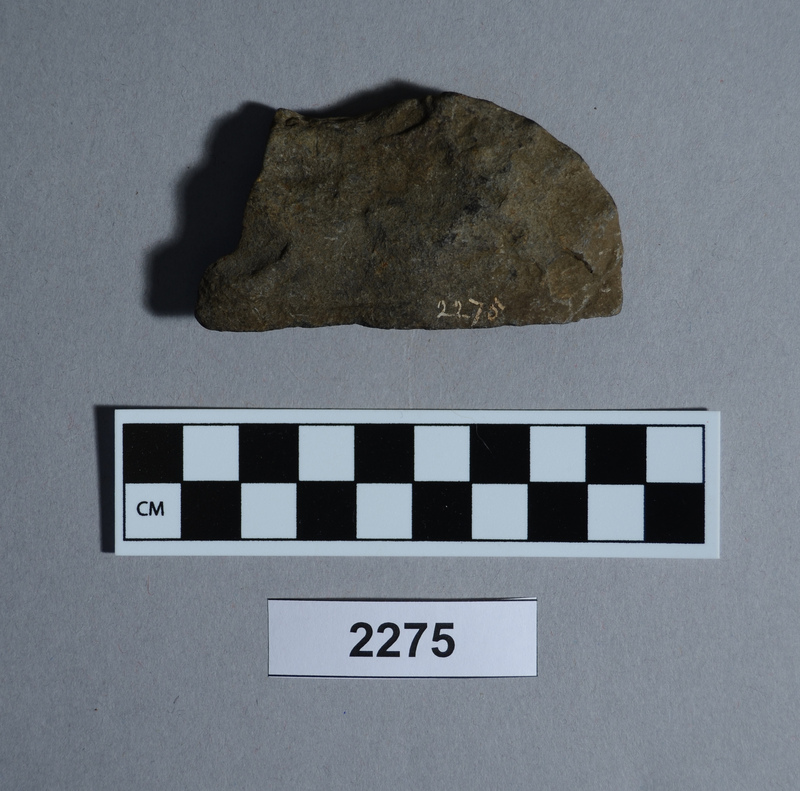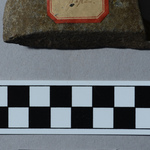Tool
2275
From: Japan | Honshu | Kanagawa Prefecture | Yokohama
Curatorial Section: Asian
| Object Number | 2275 |
| Current Location | Collections Storage |
| Culture | Late Paleolithic (uncertain) | Jomon (uncertain) | Japanese |
| Provenience | Japan | Honshu | Kanagawa Prefecture | Yokohama |
| Period | Late Paleolithic (uncertain) | Jomon (uncertain) |
| Date Made | Late Paleolithic, Japan - Jomon |
| Section | Asian |
| Materials | Stone |
| Technique | Flaked | Chipped |
| Inscription Language | English Language |
| Description | Lithic tool. Stone in the shape of an adze which has been cut into quarters. Flat stone with smooth side and rough, uneven side. Curved edge and straight polished edge cut at an angle. This is one of a group of five stone tools which have several characterstics in common. They are 2275, 2276, 2277, 2278 and 2286. Each flat stone has a long narrow flat surface. They are made of similar types of stone and were collected in Yokohama. This fact as well as the crudeness of their retouching is comparable to the bifacially chipped adzes from this same series which have been assigned a Late Paleolithic or Jomon date. 2275 resembles a unifacially chipped adze which has been neatly sliced in quarters. |
| Credit Line | Gift of Francis C. Macauley, Esq., 1890 |
| Other Number | None - Field No SF | None - Other Number |
Report problems and issues to digitalmedia@pennmuseum.org.



